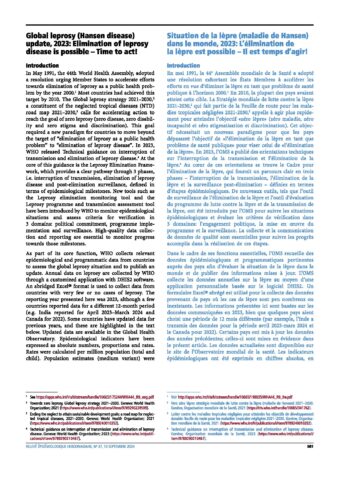
NNN Conference 2024
The annual conference of the Neglected Tropical Disease NGO Network (NNN) has just finished in Kuala Lumpur, Malaysia. Once again, there was strong representation from the leprosy world including from ILEP members, seven of which contributed to sponsorship of the event. Around a quarter of attendees had connections with leprosy organisations, and most of them participated in a three-hour leprosy group meeting. A related highlight was the participation of persons affected by leprosy, LF and Buruli ulcer. Indeed, participation by affected persons, especially in research activities, was a theme featured in several conference sessions.
Leprosy group meeting
More than 50 participants joined the two 90-minute sessions of the leprosy group meeting. This year’s meeting covered three topics, only one of which was strictly leprosy. Wim van Brakel (chair of the ILEP Technical Commission) presented the WHO Leprosy Elimination Framework with a particular focus on the practical use of the Leprosy Elimination Monitoring Tool. Constanze Vettel (from ILEP member German Leprosy Relief Association) promoted the use of the NTD Inclusion Score Card (NISC) with particular reference to the impact of the use of this tool globally within GLRA. The second 90-minute session, led by ILEP CEO Geoff Warne, focused on identifying and overcoming the obstacles to the participation of persons affected by NTDs in research, especially operational research.
Anil Fastenau (GLRA) and Inés Egino (Anesvad) also led a one-hour special plenary session on the topic of participation in research, featuring the testimony of persons affected by NTDs from Sierra Leone, Nigeria and Liberia.
Sponsorship
ILEP was once again a Platinum sponsor of the NNN Conference thanks to financial contributions by The Leprosy Mission, NLR, GLRA, Lepra, SLC, FAIRMED and Fontilles. Associated with our sponsorship was a movie night in which ILEP members were well represented with some excellent short films.
Sungai Buloh
The ILEP Secretariat took the opportunity to organize a group visit to the Sungai Buloh leprosarium, on the outskirts of Kuala Lumpur. At its peak in the 1930s, this was home to more than 2200 men, women and children suffering from leprosy, and 80 mostly very old ex-patients still live there today. ILEP member Sasakawa Health Foundation has enabled the construction of a well-designed museum that shows the history of this place, and is advocating for its recognition as a UNESCO Heritage Site.
NNN’s future
The NNN Executive Committee has agreed on the need for a comprehensive review of NNN’s work, effectiveness, structure, operating model and sustainability. The outline and purpose of this review were described at an NNN members’ lunch meeting. The review is expected to run till mid-2025.
